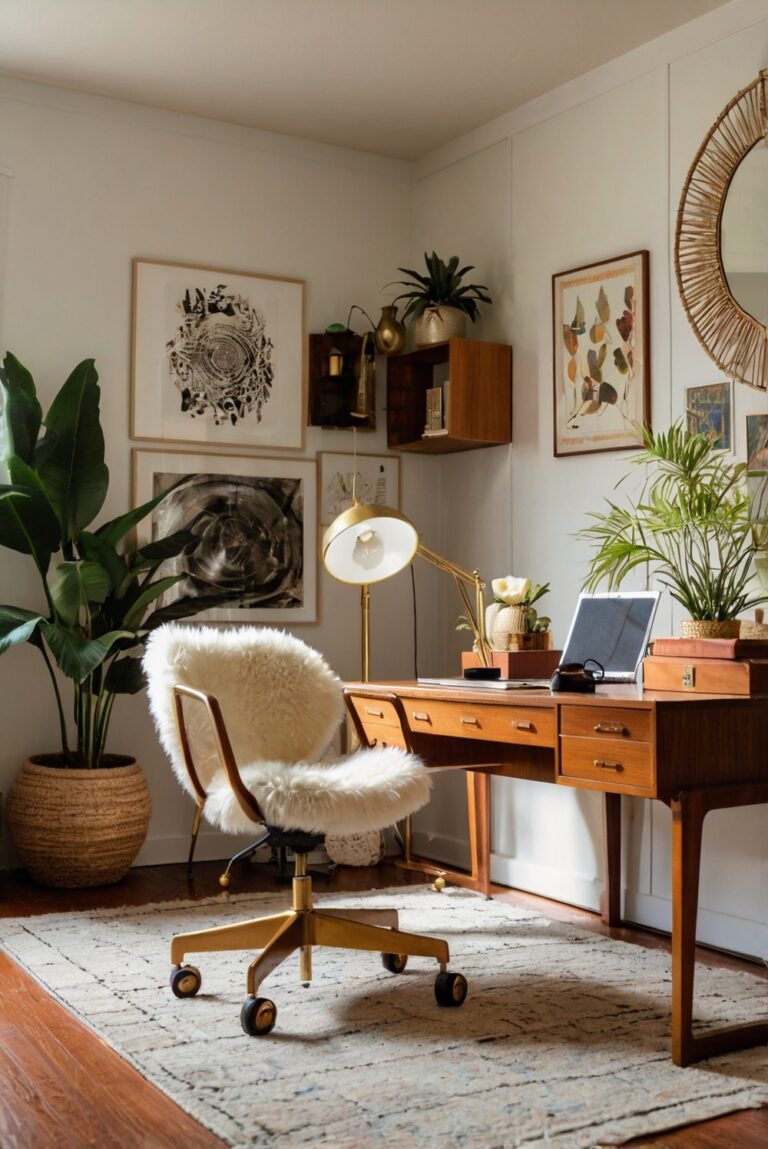What are the best ways to clean and maintain plants in a home office?

Discover effective techniques to maintain healthy plants in your home office. Learn the best ways to clean and care for your greenery for a more productive workspace.
The best ways to clean and maintain plants in a home office involve dusting the leaves regularly with a damp cloth to allow better light absorption and prevent clogging of pores. Water the plants as needed, avoiding overwatering to prevent root rot. Prune any dead or yellow leaves to promote new growth. Rotate the plants occasionally to ensure even growth. Use a mild natural insecticide to control pests. Consider repotting the plant every 1-2 years for optimal growth. Make sure to choose plants that are suitable for the lighting conditions of your home office. In terms of home decor interior design, plants can add a touch of nature and improve air quality.
Regular dusting:
One of the most important ways to clean and maintain plants in a home office is by regularly dusting their leaves. Dust can accumulate on plant leaves, hindering their ability to photosynthesize and potentially leading to pest infestations. Use a soft, damp cloth or a gentle spray of water to wipe down the leaves of your plants at least once a week.
Proper watering:
Proper watering is crucial for the health of your plants. Overwatering can lead to root rot, while underwatering can cause wilting and dryness. Be sure to research the specific watering needs of each plant in your home office and create a consistent watering schedule to keep them healthy and thriving.
Regular pruning:
Regular pruning helps to promote new growth and maintain the shape of your plants. Remove any dead or yellowing leaves, as well as any overgrown or leggy stems. Pruning also helps to prevent the spread of diseases and pests, keeping your plants in optimal condition.
Proper sunlight:
Ensuring your plants receive adequate sunlight is essential for their growth and overall health. Different plants have varying light requirements, so be sure to place them in locations where they can receive the right amount of sunlight. Consider rotating your plants occasionally to ensure they receive even light exposure.
Fertilizing:
Fertilizing your plants is another important aspect of their care. Choose a fertilizer that is appropriate for the types of plants you have and follow the instructions for application. Fertilizing helps to replenish essential nutrients in the soil, promoting healthy growth and vibrant foliage.
In conclusion, maintaining plants in a home office requires regular care and attention. By incorporating these best practices, such as dusting, proper watering, pruning, sunlight exposure, and fertilizing, you can ensure that your plants thrive and contribute to a healthy and productive work environment. Remember to research the specific needs of each plant and adjust your care routine accordingly to keep them looking their best. With a little effort and consistency, you can enjoy the beauty and benefits of plants in your home office for years to come.
1. How often should I water my plants in a home office?
It is essential to water your plants in a home office according to their specific needs. Overwatering can lead to root rot, while underwatering can cause wilting. Generally, most plants thrive when watered once a week or when the top inch of soil feels dry to the touch. However, it is crucial to research each plant’s water requirements to ensure they stay healthy and vibrant.
2. What are the best methods for cleaning plant leaves in a home office?
Cleaning plant leaves in a home office is crucial for maintaining their health and appearance. You can gently wipe the leaves with a damp cloth or sponge to remove dust and dirt. Another effective method is to mist the leaves with water or use a soft brush to gently clean them. Regularly cleaning plant leaves not only enhances their beauty but also allows them to photosynthesize more efficiently.
3. How can I prevent pests from damaging my plants in a home office?
Preventing pests from infesting your plants in a home office is essential for their well-being. You can start by regularly inspecting the plants for signs of pests such as spider mites, aphids, or mealybugs. If you notice any pests, isolate the affected plant immediately to prevent the infestation from spreading. Additionally, you can use natural remedies like neem oil or insecticidal soap to control pests without harming the plants.
4. What are the best ways to promote growth and health in plants in a home office?
To promote growth and health in plants in a home office, provide them with adequate sunlight, water, and nutrients. Ensure that your plants receive sufficient natural light or artificial light if needed. Fertilize the plants regularly with a balanced fertilizer to support their growth. Additionally, repotting plants when they outgrow their containers and pruning them to remove dead or damaged parts can help maintain their health and vigor.
5. How can I create an optimal environment for plants in a home office?
Creating an optimal environment for plants in a home office involves maintaining proper humidity levels, temperature, and air circulation. Consider using a humidifier or pebble tray to increase humidity levels, especially during the dry winter months. Keep the temperature in the room consistent and avoid placing plants near drafts or heat sources. Good air circulation can be achieved by opening windows periodically or using a fan. By creating a conducive environment, you can ensure that your plants thrive and beautify your home office.






